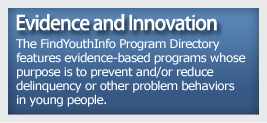Federal Data
National Automotive Sampling System (NASS)
NASS is composed of two systems, the Crashworthiness Data System (CDS) and the General Estimates System (GES). These are based on cases selected from a sample of police crash reports. CDS data focus on passenger vehicle crashes, and are used to investigate injury mechanisms to identify potential improvement in vehicle design. GES data focus on the bigger overall crash picture, and are used for problem size assessment and tracking trends.
Fatality Analysis Reporting System (FARS)
The Fatality Analysis Reporting System (FARS) contains data derived from a census of fatal traffic crashes within the 50 States, the District of Columbia, and Puerto Rico. To be included in FARS, a crash must involve a motor vehicle traveling on a trafficway customarily open to the public and result in the death of a person (occupant of a vehicle or a non-motorist) within 30 days of the crash. FARS data has been available every year since FARS was established in 1975.
Youth Risk Behavior Surveillance System (YRBSS)
The Youth Risk Behavior Surveillance System (YRBSS) monitors priority health-risk behaviors the prevalence of obesity and asthma among youth and young adults. The YRBSS includes a national school-based survey conducted by the Centers for Disease Control and Prevention (CDC) and state, territorial, tribal, and district surveys conducted by state, territorial, and local education and health agencies and tribal governments. Specifically YRBSS includes data related to risky driving behaviors including the use of a seat belt, driving while intoxicated, or riding with someone who is intoxicated.
Special Crash Investigations (SCI) and Not in Traffic Surveillance (NiTS)
Not in Traffic Surveillance incidents can fall into a variety of categories, some are crashes (which occur in private driveways) and some are incidents (occupant getting caught in a power window, hyper/hypothermia, etc.).
Crash Outcome Data Evaluation System (CODES)
Injuries resulting from motor vehicle crashes remain a major public health problem. These injuries cause unnecessary burden of increased taxes and insurance premiums. They can be prevented or reduced, but only if we understand their type, severity and cost in relation to the characteristics of the crash, vehicles, and persons involved. Crash data alone do not indicate the injury problem in terms of the medical and financial consequences. By linking crash, vehicle, and behavior characteristics to their specific medical and financial outcomes, we can identify prevention factors.
Behavioral Risk Factor Surveillance System (BRFSS)
The Behavioral Risk Factor Surveillance System (BRFSS) is the world’s largest, ongoing telephone health survey system, tracking health conditions and risk behaviors in the United States yearly since 1984. Currently, data are collected monthly in all 50 states, the District of Columbia, Puerto Rico, the U.S. Virgin Islands, and Guam.
Web-based Injury Statistics Query and Reporting System (WISQARS)
WISQARSTM (Web-based Injury Statistics Query and Reporting System) is an interactive database system that provides customized reports of injury-related data.
Youth Topics
Collaboration Profiles
Feature Articles
Tools & Guides
Technical Assistance
Websites
Videos & Podcasts
Departments


Announcements
Youth Topics
Collaboration Profiles
Feature Articles
Tools & Guides

Map My Community is a tool designed specifically to assist you in locating resources in your community to help you build and strengthen your youth program. Get ideas for new partnerships, identify gaps in your community, and learn about resources to avoid duplication of effort.



















